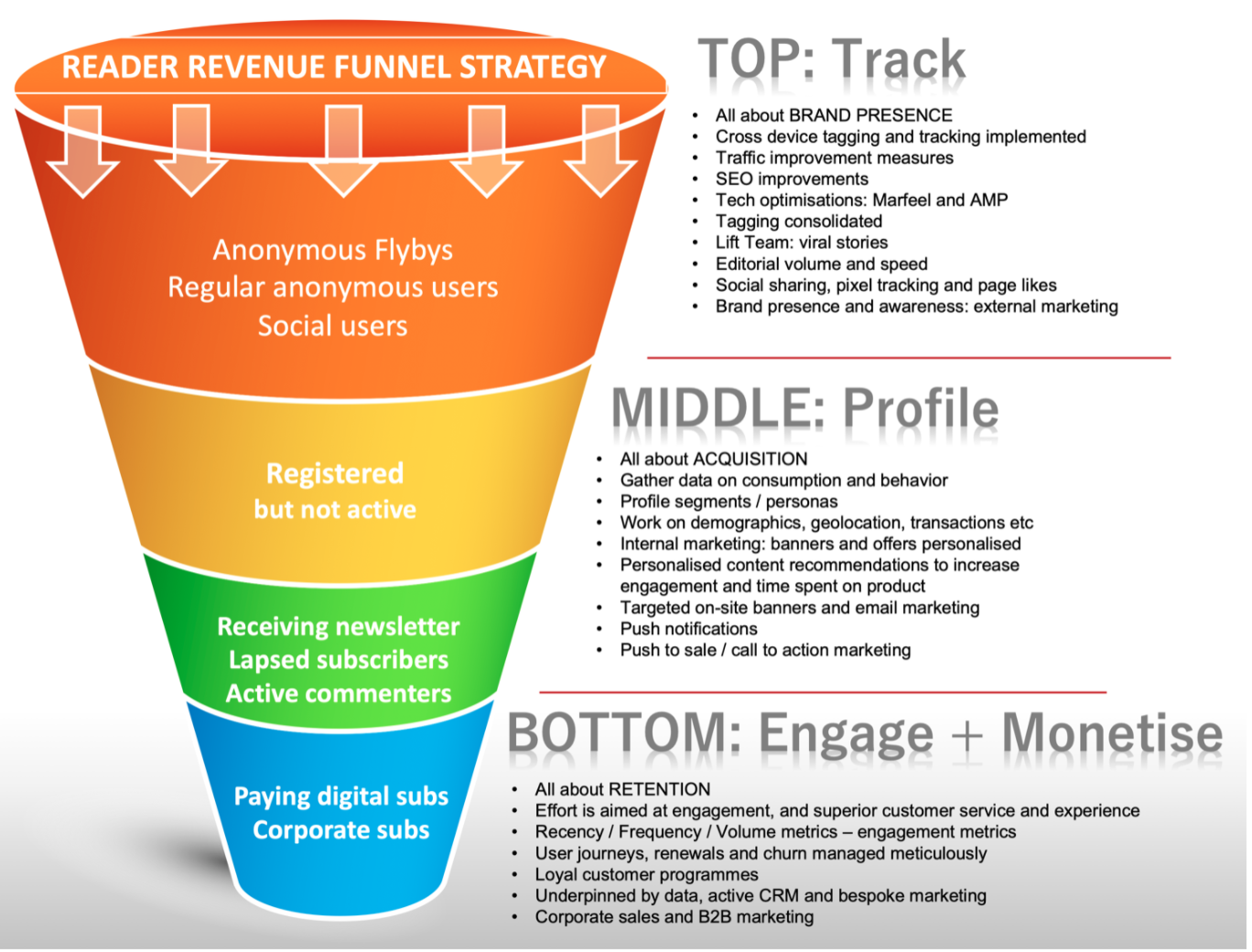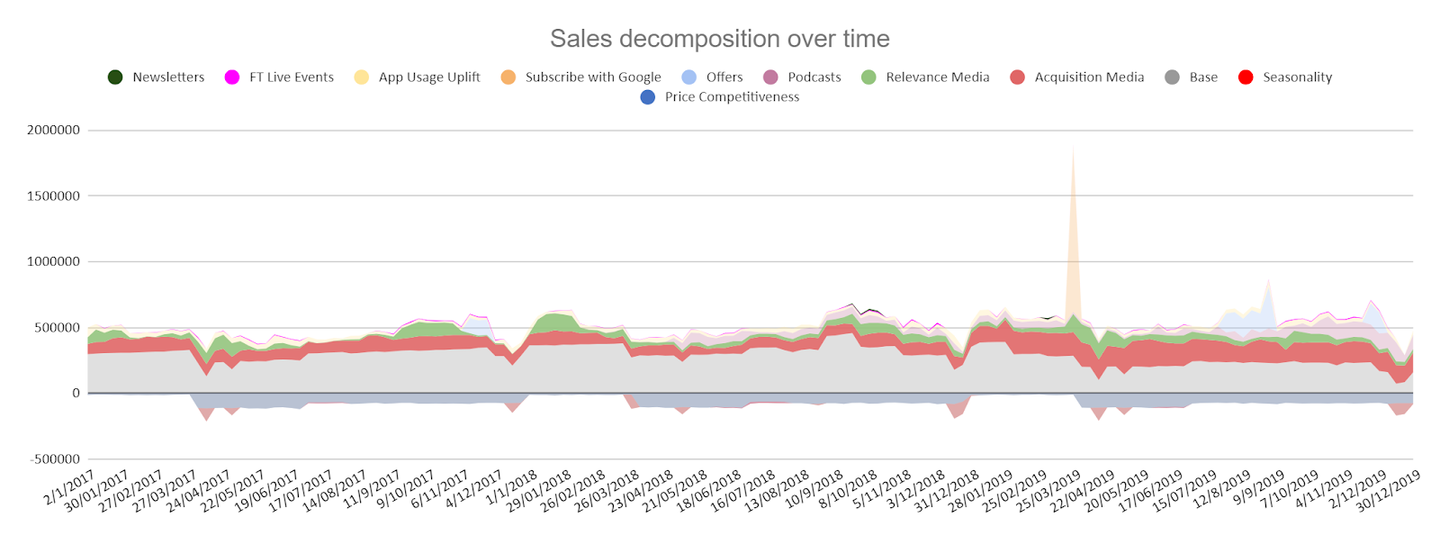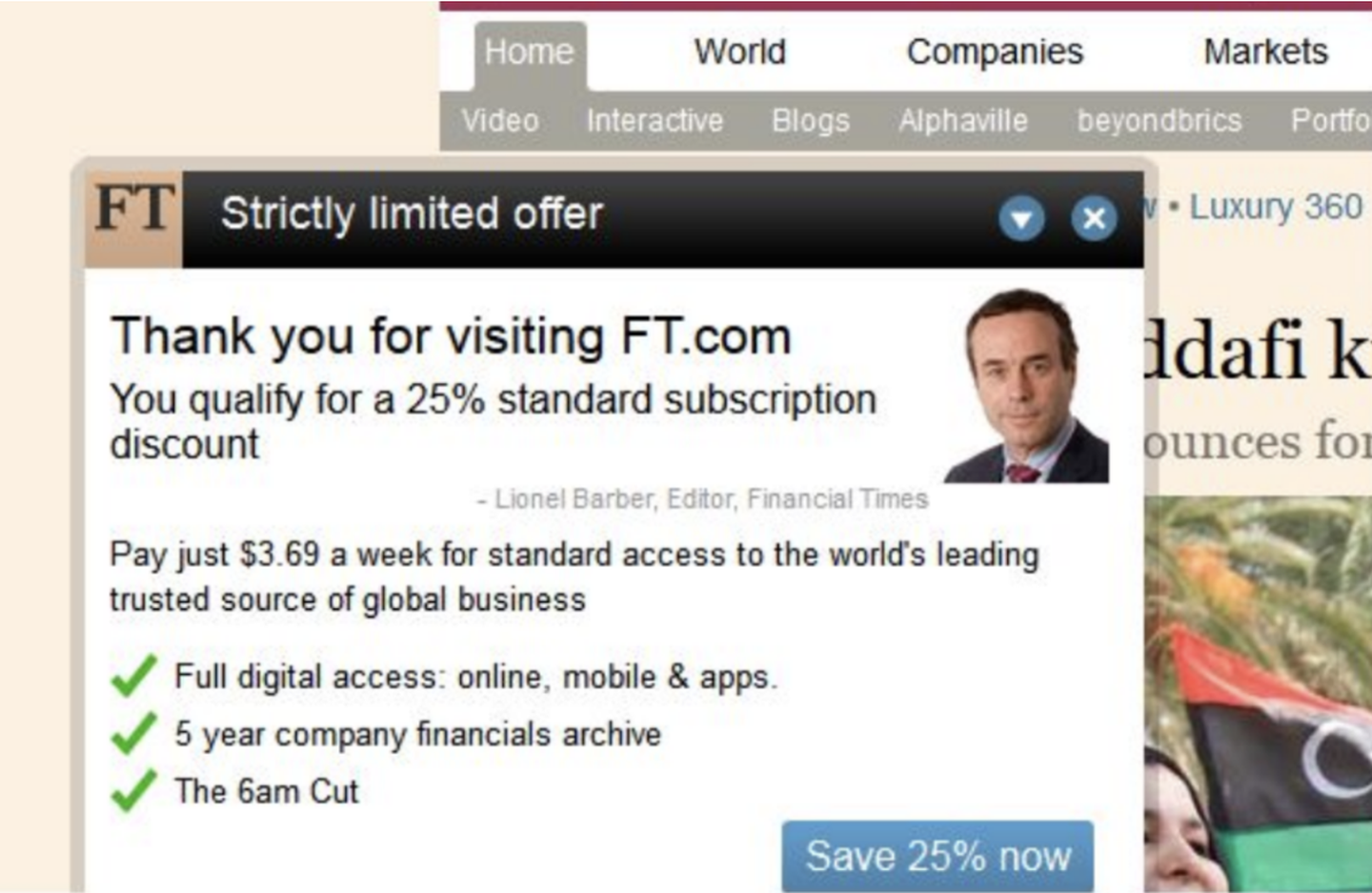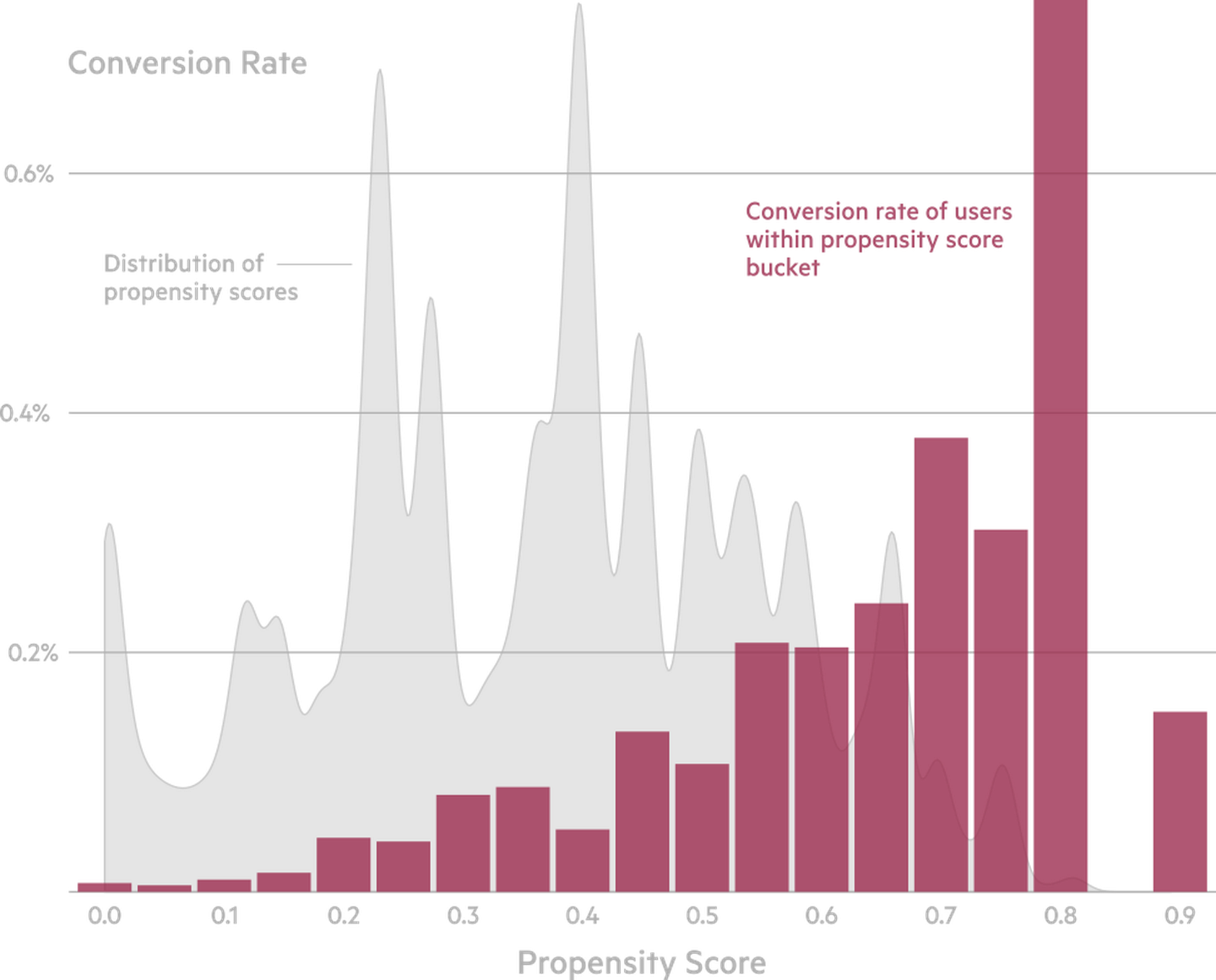Publishers are all competing for the same casual, fly-by visitors; hoping to turn them into loyal readers. This blog post is a journey through the publishing conversion funnel - from new reader to committed subscriber - and the techniques deployed at each step.
For most publishers, improving conversion rates will eventually involve showing different offers, marketing or content to different users. Predictive modelling is a tool for anticipating which information will be most relevant and personalising actions to optimise each step of the funnel.





FT Strategies has helped many businesses transform their data and prediction capabilities. If you could benefit from our expertise and support on the topics below, please get in touch.
Optimising the top of the funnel
Marketing budgets are spread across print, television, radio, podcasts and digital channels including display, sponsored search, retargeting and social media. But are you spending the right amount on each? Could money spent on Facebook generate more new registered users if it was redeployed to podcast ads? Would TV budget be more effective at acquiring younger users if directed to YouTube? Specialised predictive modelling can help answer these questions and give you a higher return on each marketing dollar.
Daniel Mill, Analytics Director at the New York Times in 2018, wrote in a blog post “if we are to spend money on marketing and media efficiently, we need to quantify and understand how each stimulus, both on-site and off-site, influences and contributes to subscriptions”
The channel by which a user engages with your brand can determine likelihood to convert. Marketing mix modelling (MMM) aims to distribute marketing spend efficiently across channels to maximise the number of new conversions or registrations. Past spending on each channel, pricing, competitor activity and news events combine to create a formula that describes and predicts the number of conversions each week. This formula is a guide to where to test spending more or less.
The MMM formula estimates the contribution of each channel to each weeks sales or new conversions





Registration and predicting conversion
Attracting a high volume of traffic to your site is not enough. Marketers and product managers need to direct prospect traffic towards registering or subscribing. Publishers have developed many approaches to this challenge; such as full paywalls, freemium models and forced registration. Which works best will depend on your brand, content and audience.
One approach is to encourage free registration in exchange for additional free articles or other benefits. In 2015, the FT had a large number of registered users under a metered model that gave readers 10 free articles per month. A propensity model scored each registered user by how likely they were to take a paid subscription. Those deemed highly likely were shown a pop-up, affectionately referred to as the “Lionel Slider” - after our editor at the time - offering a discount. At one point the campaign accounted for 15-20% of total subscriptions each week.





For most readers who are not logged in, either as registered users or subscribers, data beyond the current session is sparse. ‘Propensity-to-subscribe’ models for non-logged-in users are often difficult to build and inaccurate, because of the lack of information. For these users, cookie tracking is limited to one device and recent visits. Encouraging registration first gives time to collect more data.
High propensity scores correlate with higher conversion rates but very few users achieved high scores





Onboarding and recommendations
Conversion is not the end of the funnel. For most subscription products, the risk of churn is far higher on first renewals. In the early weeks of a subscription a reader is developing a habit and attachment to the content. Certain actions and features are powerful drivers of habit. At the FT, we know users that download the app, follow myFT topics and sign-up to newsletters are more engaged and less likely to cancel.
Once the actions and features driving engagement are known, onboarding campaigns push new readers to follow them. Again, these campaigns can be personalised with powerful effect. An FT predictive model called ‘Next Best Action’, that judged which FT product was most appropriate to recommend to each subscriber, increased monthly newsletter signups by more than 60%.
By personalising marketing communications to each subscriber, valuable email space is not wasted on recommending content or product features already used. More newsletter sign ups, app downloads and myFT follows lead to higher engagement and better retention. Improvements in retention increase the value of all other gains in traffic and conversions higher up the funnel.
How can FT Strategies help?
We’d be delighted to hear from you if you are interested in making an impact with predictive modelling. We have worked with all sizes and shapes of business in various formats – from 2-week design sprints through to longer-term engagements. And as ever, we’re always happy to start with a chat over coffee.
